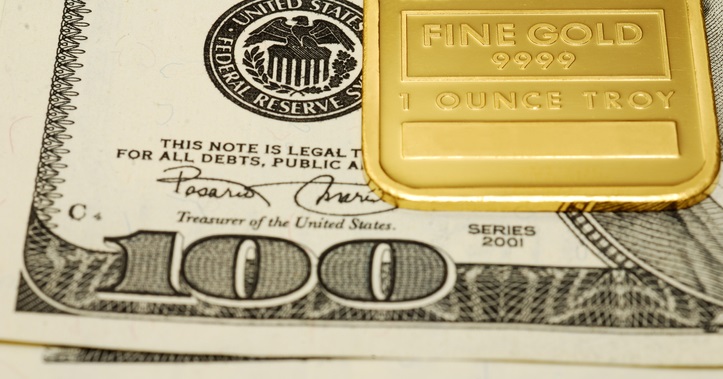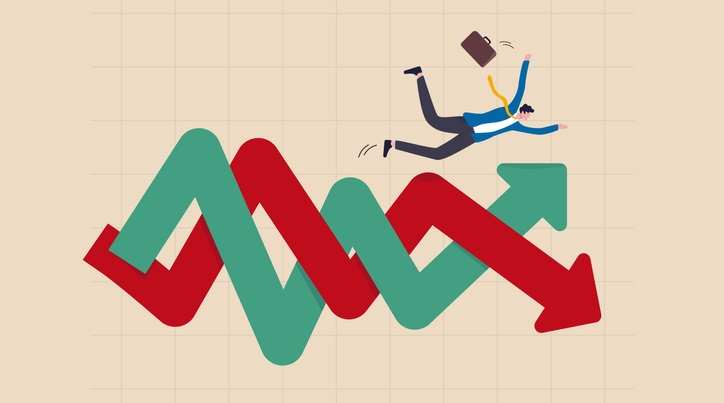Spot gold (XAUUSD) prices are already up roughly 6% in the month of December. However, the precious metal has thus far failed to break back above the $1900 level, meaning the that it is still some $200, or more than 10% away from the all-time highs set back in August. So where are gold prices headed next?
To have an idea as to how to answer that question, one must understand the principle fundamental drivers of gold (and other precious metals). Let’s discuss these below…
1) Gold is an inflation hedge
All major developed economies in the world today use fiat currency. This means these currencies by themselves are actually worthless, with the worth only coming from the fact that other people in the domestic and global economy are willing to accept the currency as a medium of exchange.
In the past, fiat currencies have failed because those in charge of their administration have been tempted to “print” additional money in order to fund government expenditure (which, to be fair, is exactly what is going on in most developed markets right now), which has resulted in rapid inflation and a loss of confidence in the currency.
To get around this problem, currencies have been backed by precious metals such as gold and silver, i.e. money was essentially a token that entitled the holder to redeem real, physical gold at the bank (or at the central bank) of a certain amount. This ensured that governments could not just print money out of this air to fund their expenses, as gold cannot be created out of this air!
But with the world now mostly on fiat currencies and global central banks increasingly opting for unconventional monetary policies that directly involve the creation out of thin air of new money, many are concerned that inflation is on the way. Gold is seen by many as “real money” given that it won’t lose its value given that it is a scarce resource and has already been used as a medium of exchange for thousands of years. Those betting on the future devaluation of fiat currencies (i.e. inflation) thus like to invest in gold.
Over the last few weeks, inflation expectations have been on the rise given 1) the arrival of vaccines that are likely to spur stronger economic growth which should push inflation higher as well as 2) the continued dovish stance of the US Federal Reserve ($120B in asset purchases using newly created money every month), which many see as inflationary. US 10-year breakeven inflation expectations moved above 1.9% this week, hitting their highest level since early 2019. As long as markets continue to bet on higher inflation moving forward, precious metals ought to remain supported.
2) Gold vs real interest rates
Another key factor that influences the demand for gold is the real rate of return (the nominal return adjusted for inflation) that investors get on alternative safe-haven assets such as government bonds. When the real yield investors get on government bonds goes up, investors tend to prefer to hold these assets relative to non-yielding precious metals (after all, when you own debt, someone is paying you back and paying you interest but when you own gold, you don’t get paid anything from anyone, though of course if the value of gold goes up you make money). Conversely, when real bond yields go down, that makes precious metals a comparatively more attractive investment based on the same logic but in reverse.
US debt made up about half of global debt in 2019, so watching what is happening to real yields in US debt markets is a decent proxy to watch for gold. Indeed, the Covid-19 crisis, which saw the Fed axe interest rates to 0.0-0.25% and start a massive, interest rate depressing QE programme has pushed US 10-year TIPS yields to all-time lows of below -1.0%. That means holders of US 10-year bonds pay over 1.0% for the privilege, when adjusted for inflation. This big drop in real yields from positive territory as recently as 2019 has been a key factor behind the precious metal bull market.
Real yields might well have further to fall. CPI expectations over the next are still well below the Fed’s roughly 2.4% CPI target at 1.9% (note, the Fed has a 2% Core PCE inflation target, and Core PCE is typically about 0.4% lower than CPI, so inflation expectations at 2.4% roughly imply Core PCE expectations at the Fed’s target). If the Fed continues to stimulate the economy in order to chase its inflation goal, while simultaneously keeping nominal interest rates low, this will cause real interest rates to drop. If this does occur over the coming years, it ought to offer support to precious metals.
3) The value of the US dollar
When talking about spot gold, or XAUUSD, it is of course important not just to consider the gold side of this equation (the XAU part), but also the USD part. Indeed, a key determinant of spot gold prices is what happens with the US dollar, with the precious metal having a negative relationship to the buck.
So what is happening to the US dollar right now?
Things have been ugly. As measure by the Dollar Index (DXY), USD is down more than 12% from the highs it set back in March at the peak of the Covid-19 lockdown induced panic. Back in March, people rushed to sell everything in exchange for USDs, given that it is the world’s reserve currency and seen by many as the last pillar to fall in case of a full-scale global financial collapse.
But since then, the US Federal Reserve has printed ungodly amounts of USDs (the Fed’s balance sheet is now over $7.2T, up from around $4T prior to the Covid-19 crisis). By some estimates, roughly 22% of all the USDs ever issued by the US Federal Reserve have been issued in 2020. Moreover, the rate at which the Fed expanded its balance sheet in 2020 far exceeded all other major global central banks combined.
The flood of newly created USDs issued by the Fed has naturally triggered a sizeable drop in the value of each of these USDs, on international currency markets anyway. With the Fed maintaining a dovish bias (it hinted more QE could be in the pipeline for early 2021 at Wednesday’s meeting), the flood is not over just yet.
Meanwhile, the arrival of vaccines and the victory of Joe Biden in the US Presidential election over Donald Trump are also being taken as dollar negative factors as, combined, they signal a strong recovery in global economic and trade growth in 2021 and beyond (which is typically never a good thing for safe-haven USD). As long as USD’s downtrend continues into 2021, precious metals such as gold are likely to remain supported.




